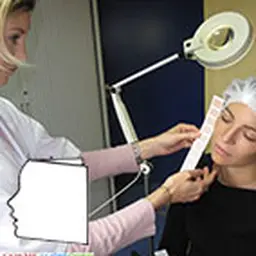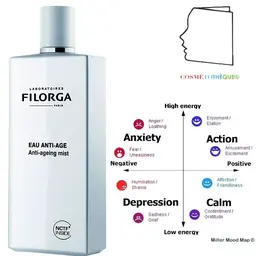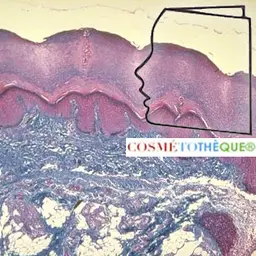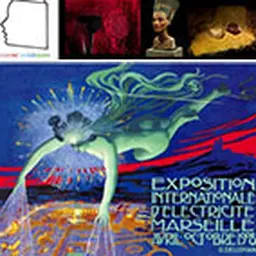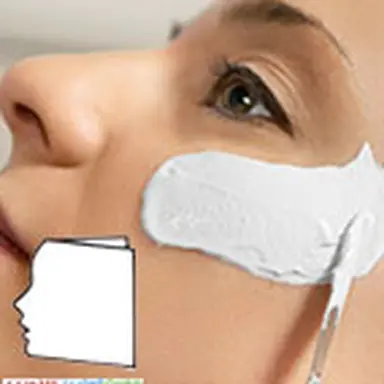
In this section, Michelle Vincent leads us to other contributions, those describing how some private companies have ensured the continuity of university research work in skin bioengineering to complement in their own way the initial knowledge. These contributions are not the only ones (and we will try to get more testimony), but they represent the way things have been approached. - Jean Claude Le Joliff
3. The continuum with private initiatives
In 1977, the CERCO (Centre d'Études et de Recherche Cosmetologiques) was created under the impetus of a passionate cosmetologist chemist, Paul Tisnes, who was to be its administrator, and Professor Jean Pierre Escande, dermatologist, both studying the hydro-lipido-protidic (HLP) film of the skin surface. This G.I.E (Economic Interest Group), is initially hosted by Sanofi. It includes Yves Rocher (40%), Roger & Gallet (20%), Stendhal (20%) and Expansion Biologique Française (20%). Ginette Brouchot, beautician at Yves Rocher, will also be part of the adventure. These three pioneers, surrounded by a small team of technicians, were well aware that they were taking part in the start of a new path in cosmetology. To carry out their research, CERCO will have: - a technical platform to study the skin surface and its relief, research new investigation methods, develop study protocols, - a laboratory to perform efficacy tests on cosmetic products, - and a mini beauty institute to reward volunteers participating in the tests.
The most significant study, the one that will define the CERCO DNA, concerns the description of the microdepressionary network (RmD)[1] of the skin revealed using the fingerprint microphotography technique. Until then, the skin was schematized in cross-section, but never the surface had been reproduced, except in criminology with the taking of fingerprints in the 19th century. It was not until the end of the 20th century that the RmD was visualized using the fingerprint technique. Made with an elastomer compound, it will faithfully reproduce the finest structures of the skin. This elastomer deposited on the skin will polymerize and give a negative (or impression). This is then converted into a positive replica by the action of a resin and a catalyst. These hardened fingerprints can be stored very easily.
The CERCO team shows that the skin is structured by a network of fine furrows, the RmD, of which two kinds of lines can be distinguished: - those of the first order, organized in losanitary meshes, which reflect exactly the organization of the dermo-epidermal junction (JDE), - those of second order, finer, which are added to the first and testify to epidermal alterations.
They also demonstrated that skin aging results in an enlargement of the RmD mesh[2]. And that in men, these meshes are disorganized early under the action of aggressions such as shaving or soaping. These differences between men and women are clearly visible on the skin prints (photo).
Wrinkle metrology will become CERCO's battle horse from the very beginning. In 1997, Sanofi withdrew and CERCO became a general partnership (SNC).
Virginie Couturaud then assumed the direction. She still runs this centre today with the same passion. And explains his vision to us:" CERCO's objective was to be able to measure the effects of cosmetic products. We were the first to do this in 1977. The three main axes on which we worked were hydrolipidic film, RmD and skin pH. The discovery of RmD proved to be a faithful reproduction of the underlying structures. Hence the interest! The observation of the RmD makes it possible to judge at the same time the external and internal state of the skin. It is our reserve of elasticity, and, like an accordion, stretches with age. Since then, we continue to develop many physical techniques: profilometry, fringe projection, confocal microscopy, RAMAN… In 1997, Sanofi withdrew and CERCO became a GIE of the Rocher Group brands to become a general partnership (SNC) since 2013. We remain experts in skin microrelief . With RAMAN, we want to identify an internal"bar code" of the skin that would reflect the surface condition".
Another approach, the CE.R.I.E.S., CEntre de Recherche Épidermique et Sensorielle
In 1996, Chanel SAS announced the creation of a research center on healthy skin (autonomous structure), emphasizing that dermatology and cosmetology must work together to better meet women's expectations.
Since 1992, a core group of researchers (dermatologists, pharmacists, doctors, epidemiologists, etc.) has been working on the concept of healthy skin. Starting from the observation that the traditional classification of skin types is obsolete, they will propose a clinical approach, based on the postulate that the skin is the result of both a genetic experience and consecutive to environmental conditions, lifestyle and hygiene practices. The originality of this research lies in the combination of a clinical approach and an epidemiological approach.
To carry out its mission, the CE.R.I.E.S. is supported by an international scientific committee composed of six dermatology experts, chaired by Prof. Louis Dubertret, head of the dermatology department at Saint-Louis Hospital in Paris. The role of this committee is to advise the CE.R.I.E.S. and to validate the scientific options taken. Professor Erwin Tschachler is the scientific director. Numerous collaborations are carried out throughout the world to understand all the characteristics of the skin in different latitudes and different cultures.
The beginning of an adventure that has lasted more than 20 years with more than a hundred publications including the skin age score, the description of sensitive skin, a new classification of healthy skin, genes associated with skin aging, etc., a database of 20,000 images of women's faces, the development of imaging tools, methods for measuring appearance… and studies to support the launch of Chanel skin care products.
The adventure continues within the Women's Biology & Beauty Department dedicated to these activities within the Chanel Research Centre. Among the themes worked on for some time, the understanding of the characteristics of the face defining the criteria of beauty is at the center of all attention. These techniques use among others Eye Tracking approaches, a particularly promising method.
Some CERIES & CHANEL Research and Technology publications
- Guinot C, Malvy D, Tenenhaus M, Latreille J, Ambroisine L, Mauger E, et al. relative contribution of intrinsic versus extrinsic factors to skin aging as determined by a validated skin age score. Archives of Dermatology, special issue"Aging". 2002;138:1454-60. - Guinot C, Malvy D, Morizot F, Tenenhaus M, Latreille J, Lopez S, et al. classification of healthy human facial skin. In: Maibach RBeHI, editor. Textbook of Cosmetic Dermatology. Taylor & Francis ed. London2005. p. 27-39. - Morizot F, Guinot C, Lopez S, Fur IL, Tschachler E, Wood C. Sensitive skin: Analysis of symptoms, perceived causes and possible mechanisms. Cosmetics and Toiletries. 2001;115:83-9. - Le Clerc S, Taing L, Ezzedine K, Latreille J, Labib T, Coulonges C, et al A genome-wide association study in Caucasian women points out for a role of the STXBP5L gene in facial photoageing. Journal of Investigative Dermatology. 2013;133:929-35. - Porcheron A, Mauger E, Russell R. Aspects of Facial Contrast Decrease with Age and Are Cues for Age Perception. PLosOne. 2013;8(3):e57985. - Development of photographic scales documenting features of skin ageing based on digital images. XXth World Congress of Dermatology, Paris, 1-5 July 2002. - Tschachler E, Morizot F. Ethnic differences in skin aging. In: Gilchrest B & Krutmann J, eds: Skin aging, Chapter 3:23-31, Springer, 2006. - Ambroisine L, Ezzedine K, Elfakir A, Gardinier S, Latreille J, Mauger E, et al. Relationships between visual and tactile features and biophysical parameters in human facial skin. Skin Research and Technology. 2007;13:176-83.
Now what?
The increasing success of image processing, the development of non-invasive methods of analysis in vivo the composition and structure of the skin (Raman spectroscopy in vivo does not deny itself. A multitude of private and public companies continue to work to develop increasingly sophisticated tools.
As mentioned in the introduction, the purpose of this article is not to make an exhaustive list of all existing devices, many sites do but to relate some pioneering initiatives in their time and imagine the future.
Act 3, the future is in motion with the design of mini-labs under the skin, connected sensors delivering real-time information…
1] CERCO internal file reference, RMD brochure, SAUBA Dermatology laboratories scientific file, Paris.
2] Thesis by Melle Sorel, 1989, Study of the microdepressionary network by an image analysis technique: development of a method for measuring skin aging.
|
We owe this new contribution to Michelle Vincent. Special thanks to Frédérique Morizot, Director of the Women's Biology & Beauty Department at Chanel Parfums Beauté and Virginie Coutureau, Director of CERCO (Yves Rocher group), for their contribution and availability.
Michelle Vincent
|

 Michelle graduated from ENSAM Montpellier (now SupAgro) in food science and started her career as a quality engineer in the Intermarché group. In 1993, fate led her to a more glamorous universe, that of cosmetics. She joined Chanel in Neuilly sur Seine. At the same time, at the end of 2012, she created her consulting firm to assist companies in the development of evaluation methods, cosmetics and scientific content writing. Finally, she teaches at ISIPCA on modules of sustainable development, CSR, and the natural sciences. She has collaborated with the Cosmétothèque® since its creation.
Michelle graduated from ENSAM Montpellier (now SupAgro) in food science and started her career as a quality engineer in the Intermarché group. In 1993, fate led her to a more glamorous universe, that of cosmetics. She joined Chanel in Neuilly sur Seine. At the same time, at the end of 2012, she created her consulting firm to assist companies in the development of evaluation methods, cosmetics and scientific content writing. Finally, she teaches at ISIPCA on modules of sustainable development, CSR, and the natural sciences. She has collaborated with the Cosmétothèque® since its creation.

